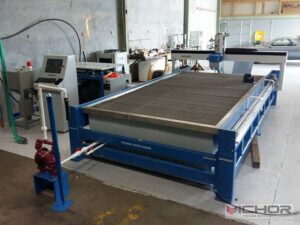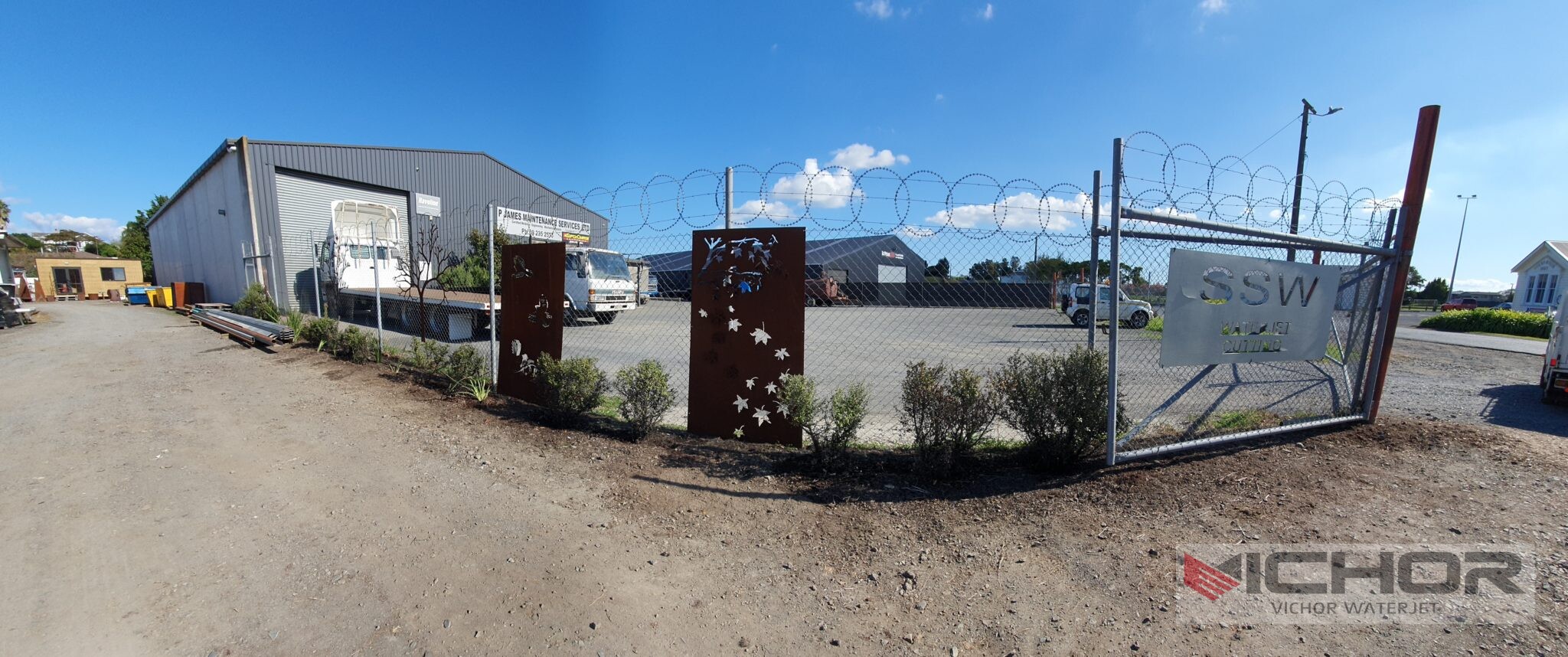
7 Critical Factors That Determine Water Jet Cutting Thickness
Water jet cutting stands as one of the most versatile and powerful manufacturing processes available today. Its ability to slice through a vast array of materials without generating heat-affected zones makes it a preferred choice for countless industries. However, one of the most common and crucial questions engineers, designers, and manufacturers ask is: “How thick can a water jet cut?” The answer is not a single number but a fascinating interplay of physics and engineering. The achievable water jet cutting thickness is influenced by a combination of factors, each playing a pivotal role in the process. This article delves into the seven critical elements that define the limits and capabilities of cutting depth with this technology.
The Role of Material Type and Hardness
The very first consideration when determining potential water jet cutting thickness is the material itself. A water jet stream will penetrate soft materials far more deeply than hard, dense ones.
Soft Materials: Materials like foam, rubber, carpet, insulation, and food products can be cut to exceptional depths, sometimes exceeding 12 inches (300 mm) with a pure water jet (no abrasive). This is because these materials offer little resistance to the high-pressure stream.
Medium-Hard Materials: This category includes non-ferrous metals like aluminum and copper, along with plastics, stone, and tile. These require the use of abrasive garnet mixed into the water stream. Typical water jet cutting thickness for these materials ranges from 1 inch to 6 inches (25 mm to 150 mm) under standard industrial setups.
Very Hard Materials: Hardened steel, tool steels, and certain high-strength alloys present the greatest challenge. While water jets can still cut them, the maximum effective thickness is reduced due to the immense density and toughness. Cutting through 8-10 inches (200-250 mm) of titanium or armor plate is possible but requires optimized parameters and more time.
The fundamental rule is that the hardness and density of the material are inversely proportional to the achievable cutting depth when all other factors are held constant.
Water Pressure: The Driving Force
Water pressure is the engine of the water jet system. Measured in Pascals (Pa) or, more commonly, pounds per square inch (PSI), it is the primary source of the stream’s energy. The relationship between pressure and water jet cutting thickness is direct and exponential.
Standard industrial water jet pumps operate at 60,000 PSI (4,100 bar) or 90,000 PSI (6,200 bar). The higher the pressure, the faster and more energetic the water stream, allowing it to blast through thicker sections of material. A pump rated at 90,000 PSI can typically cut about 40% thicker materials than a 60,000 PSI pump on the same material, or it can cut the same thickness significantly faster.
Ultra-high-pressure pumps pushing 100,000 PSI and beyond are now entering the market, continually pushing the boundaries of what is possible in terms of maximum water jet cutting thickness and speed.
Abrasive: The Key to Cutting Hard Substances
For any material harder than marble, abrasive is non-negotiable. A pure water jet is ineffective on metals and ceramics. The introduction of a hard abrasive garnet (typically 80 or 120 mesh) transforms the water stream from a cutting tool into an erosion tool.
Abrasive Flow Rate: This is precisely measured in pounds per minute (e.g., 0.8 to 1.5 lb/min). An insufficient flow rate will result in a slow, tapered cut that cannot achieve maximum thickness. An excessive flow rate can saturate the stream, reducing its velocity and efficiency, and becomes wasteful. Optimizing this rate is crucial for maximizing the water jet cutting thickness for a given material.
Abrasive Quality and Size: The hardness and sharpness of the garnet particles determine their cutting efficiency. Old, degraded, or inconsistent abrasive will severely hamper performance. The correct mesh size ensures a balance between cutting speed and surface finish; a coarser grit can sometimes aid in cutting thicker sections by providing more aggressive erosion.
The abrasive does the actual cutting on hard materials; the water’s primary job is to accelerate the abrasive particles to supersonic speeds.
Cutting Speed and Nozzle Standoff
The speed at which the nozzle moves across the material (cutting speed or feed rate) is intimately tied to the desired water jet cutting thickness.
Cutting Speed: To achieve a greater cutting depth, the nozzle must move more slowly. This allows the abrasive water jet more time to erode through the material’s entire depth. A rule of thumb is that doubling the water jet cutting thickness requires reducing the cutting speed by approximately 50-70%. This is why cutting very thick parts is a time-consuming process. Manufacturers must find the perfect balance between productivity (speed) and capability (thickness).
Nozzle Standoff: This is the distance between the nozzle orifice and the surface of the material. A consistent and minimal standoff distance (typically around 0.060″ to 0.125″ or 1.5mm to 3mm) is vital for maintaining stream cohesion. If the standoff is too large, the stream will begin to diverge and widen before it hits the material, losing energy and reducing its ability to pierce deep sections, resulting in a wider kerf and a tapered cut.
Nozzle Design and Orifice Size
The nozzle assembly is where the magic happens. It consists of two key components:
The Orifice: Made of diamond or sapphire, this tiny hole (typically 0.010″ to 0.015″ or 0.25mm to 0.38mm in diameter) creates the high-pressure pure water jet. A worn or damaged orifice will create a poorly formed stream, drastically reducing cutting performance and maximum achievable thickness.
The Mixing Tube (Focusing Tube): This is where water and abrasive mix and are focused into a coherent stream. Mixing tubes are made of ultra-hard carbide and have a finite lifespan. As they wear, the internal diameter increases, causing the stream to widen and lose precision and cutting power. Using a worn mixing tube is one of the most common reasons for a sudden failure to achieve the expected water jet cutting thickness.
The condition and quality of these consumable parts are often the difference between a perfect, deep cut and a failed one.

The Trade-Off: Taper and Surface Finish at Extreme Depths
As the water jet cutting thickness increases, a natural physical phenomenon called “taper” becomes more pronounced. The stream loses energy as it travels through the material, causing the bottom of the cut to be narrower than the top. This results in a V-shaped kerf.
For precision applications, this taper must be minimized or eliminated through techniques like:
Dynamic Waterjet® Taper Compensation: A software and hardware technology that automatically tilts the nozzle during the cut to produce near-vertical edges on both sides of the material.
Slowing Down: Reducing the cutting speed at the cost of productivity.
Furthermore, the cut surface finish changes with depth. The top surface will be very smooth, while the exit side of a thick cut will be rougher and show distinct striations. Understanding this trade-off is essential for applications where edge quality is critical throughout the entire water jet cutting thickness.
As we have explored, the question of water jet cutting thickness does not have a simple answer. It is a dynamic variable controlled by seven key factors:
Material Type and Hardness
Water Pressure
Abrasive Flow and Quality
Cutting Speed
Nozzle Standoff Distance
Nozzle Condition and Design
Accepted Tolerances for Taper and Finish
While a water jet can technically cut materials over 12 inches thick under ideal conditions, the practical, efficient, and precise water jet cutting thickness for most metals and hard composites is in the 4-inch to 8-inch range. The true power of water jet cutting lies in its flexibility—by understanding and adjusting these parameters, operators can tailor the process to achieve the perfect balance of thickness, speed, and quality for any project.
continue reading


